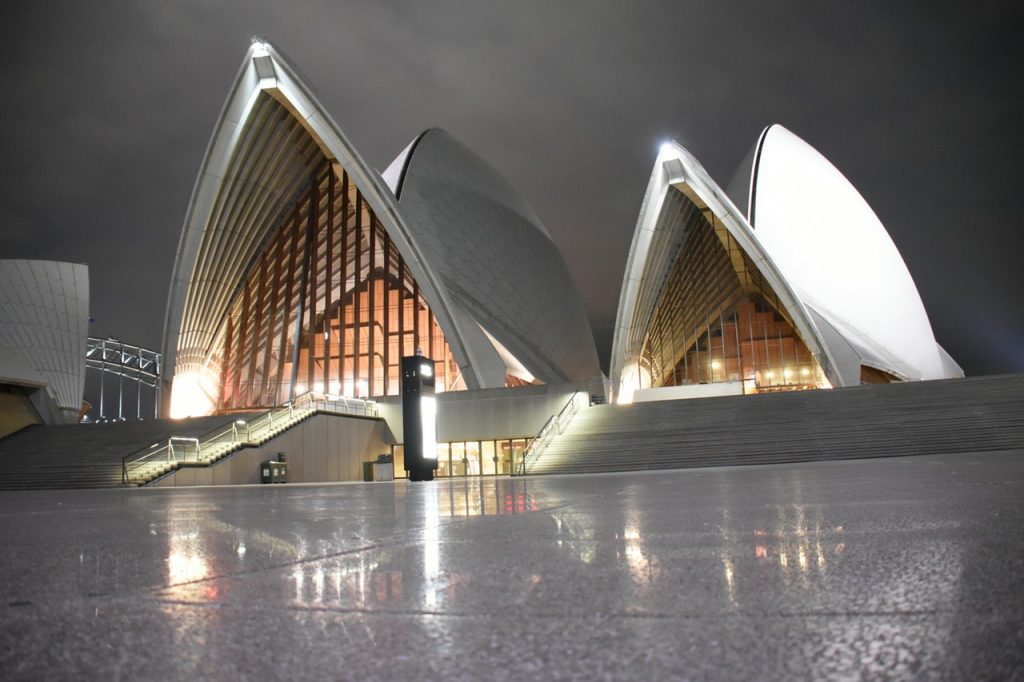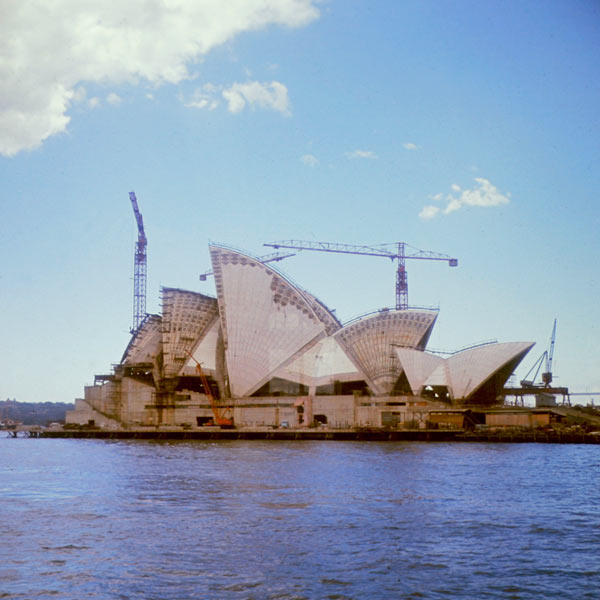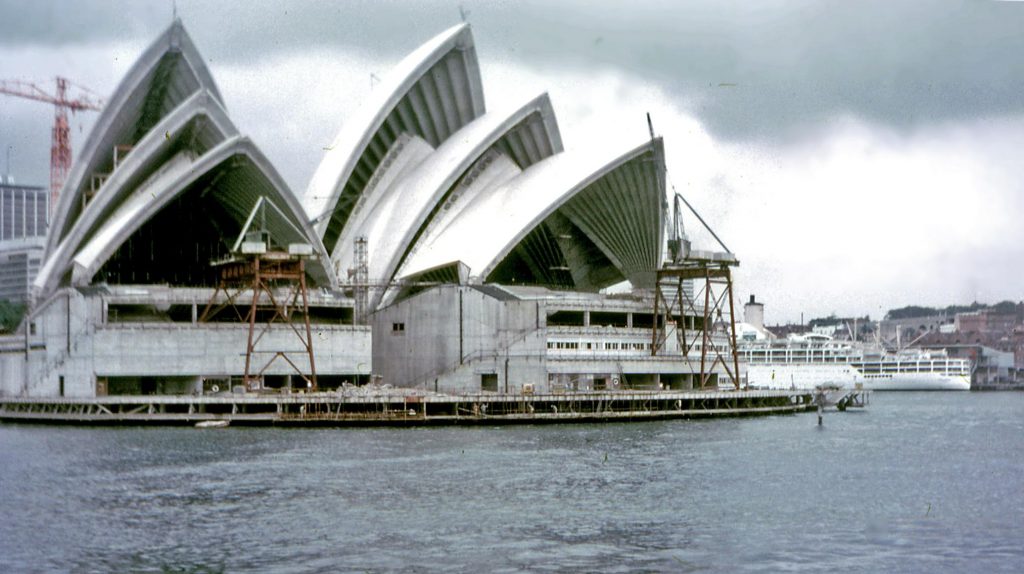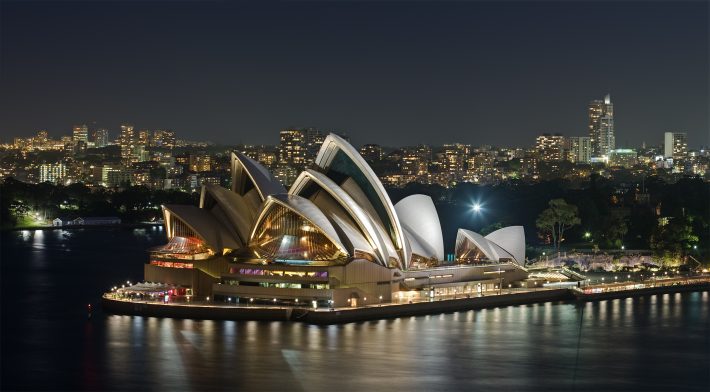The 20th of October 2017 marks the 44th anniversary of the opening of one of the most daring and complex buildings attempted in the world at the time, the Sydney Opera House.
Plans began for a large concert venue in Australia began in the late 1940’s when Eugene Goossens, the Director of the NSW State Conservatorium of Music, lobbied for a large theatrical productions venue to replace the Sydney Town Hall, which was a lot smaller than required.
An international design competition for the project was launched in 1955 and received 233 entries and of the entries received there was a standout winner from Danish architect Jørn Utzon.

Construction on Utzon’s design of the Sydney Opera House began in March 1959 and immediately hit a stumbling block; the geology of Bennelong Point had not been surveyed accurately at the time of the competition guidelines.
It had been assumed that the promontory comprised Hawkesbury sandstone mass, like the surrounding land; whereas in fact, it was made of loose alluvial deposits permeated with seawater and completely unsuitable for bearing the weight of the intended structure.
Well over 700 steel-cased concrete shafts, 1 metre each in diameter, were bored down into the perimeter and northern half of the site. Mass concrete foundations filled in the unstable rock in the central area of the site.
This preparatory work had not been budgeted for, setting the building on a course of extended overruns beyond its estimated cost of cost of 3.5 million pounds.

Image Source
Construction of this colossus of a building hit another snag, with the design of the iconic roof nothing more than a speculative drawing, nobody knew how they were going to construct it and with that nobody had any idea of how much it would weigh. Engineering company Ove Arup and Partners were unable to find an acceptable solution to constructing them. T
he formwork for using in-situ concrete would have been far too expensive, and, because there was no repetition in any of the roof forms, the construction of precast concrete for each individual section would possibly have been even more expensive. In mid-1961, the design team found the perfect solution to the problem; the shells all being created as sections from a sphere.
This solution allows arches of varying length to be cast in a common mould, and a number of arch segments of common length to be placed adjacent to one another, to form a spherical section. This was both cost effective and doable.

Image Source
The final design for the roof was tested extensively in wind tunnels to ensure it would be up to the rigors of the high sea winds. Final construction of the roof was performed by Hornibrook Group Pty Ltd who manufactured 2400 precast ribs and 4000 roof panels on site.
The site engineer from Ove Arup and Partners supervised the construction of the shells, which used an innovative adjustable steel-trussed “erection arch” to support the different roofs before completion.
Having an original expected completion date of 26th January 1963 and a budget of $7 million the construction was over a decade late (October 1973) and it ended up being 1,357% over budget ($102 million).
Whilst this building would probably be a fairly easy task with modern building methods, for the time this building was ground-breaking and was added as a UNESCO World Heritage Site in 2007 in recognition to its history.
Article produced by Abbey Pynford.
